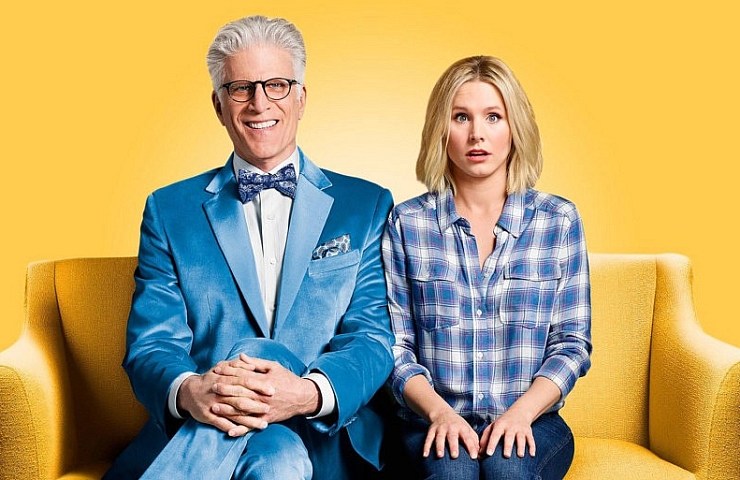Spoilers for the first season of “The Good Place” ahead:
I was skeptical of “The Good Place” in the beginning. Cautiously awarding the first two episodes a 7 out of 10, the plot of “The Good Place”—bad person ends up in heaven by accident and must work to become a better person—was one that would seemingly struggle under the constraints of network television. Despite former “Parks and Recreation” show runner Michael Schur leading the series, I was betting it’d crumble under expectations.
Instead, “The Good Place” revealed itself to be masterfully resourceful in its plotting, finding endless ways to push forward the central conflict and even blowing up its premise halfway through without blowing up the show, when bad-person-in-hiding Eleanor (Kristen Bell) reveals to the entire population that she doesn’t belong in The Good Place. Still, the possibility that this show could break down at any moment was always looming over head.
In the end, “The Good Place” managed to not only stick the landing, but reinvigorate the show heading forward. In its finale that aired on Jan. 19, “Michael’s Gambit,” the series upended the central premise even further: This wasn’t about one bad person being in The Good Place. It was never even set in The Good Place to begin with. The Good Place is really The Bad Place meant to torture its four main characters in unique ways, and that’s an insane twist that blows the mind, but the reason why it’s so great runs deeper than just innate thrills.
Underneath its serialized structure is a rumination on what makes a good person, and the idea that redemption through becoming one is possible. When Eleanor arrived in The Good Place she wasn’t terrific, but she was also the product of parents that didn’t want her, forcing her to become self-reliant in the form of closed-off selfishness. She had the capacity to change, and she did. While an inane points-system might have slotted her as “bad”, she proved otherwise.
All the characters found themselves overcoming their initial flaws to do good things. Even someone as ineptly bad as venal Jason (Manny Jacinto) could eventually see he needed to face eternal damnation over someone as clearly better as painfully ethical Chidi (William Jackson Harper), and vain but goodhearted Tahani (Jameela Jamil), who both poured themselves into helping Eleanor stay with them. The twist of “Michael’s Gambit” is so effective because making the series set in The Bad Place underlines its core belief that goodness can exist anywhere, even in the depths of Hell.
It’s a lovely, potent theme, and one that renews the power behind 21st century television’s favorite topic of interest: That there’s no black and white, but a lot of gray. The great TV shows of the era,—from “The Wire” to “Mad Men” to “Game of Thrones”—have all captivated viewers by peering into this ideology through its characters. But where prestige is present imitators will arrive, and the dark antihero cable drama era had seemingly gone bust. “The Good Place” revitalizes those ideas by giving it a fresh box to work in as a half-hour fantasy comedy for network television.
I don’t know what to expect of “The Good Place” come Season Two—that is if it gets the renewal in the first place. It’s still up in the air despite generally good ratings. And that sense of unknown is exciting. The first season of “The Good Place” was a thrilling, intellectual blast, full of immense performances all around its cast, but especially from Bell, Harper and the magnificent Ted Danson, whose transition into villain makes me even more excited for next year.
“The Good Place” is a good show that stands to get even better.
9 out of 10





Recent Comments